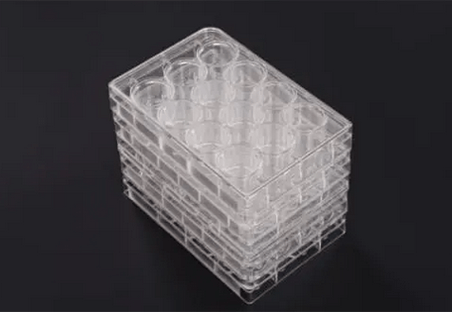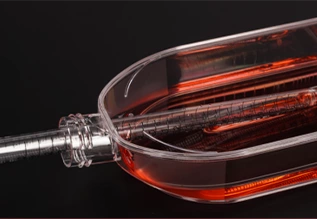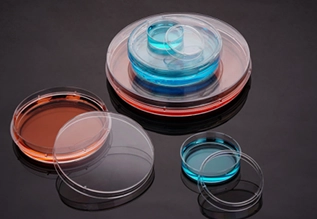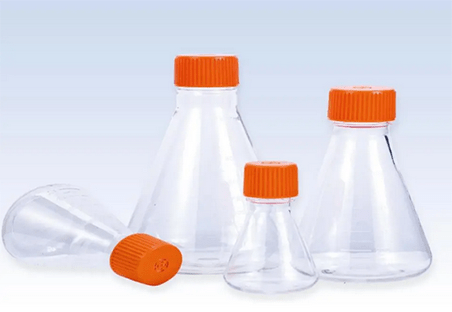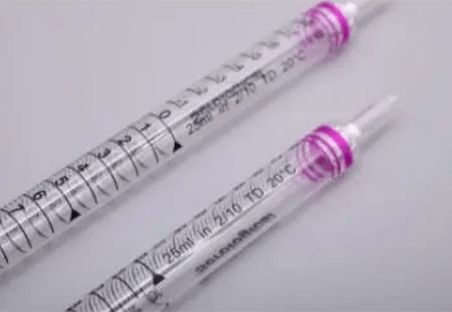A common type of laboratory glassware used to hold, mix, and heat liquids is the Erlenmeyer flask, also called a conical flask. Its conical form with a flat bottom and a cylindrical neck defines it. The glass used to make Erlenmeyer flasks is called borosilicate glass, and it has chemical and heat resistance. From 25 milliliters to several liters, Erlenmeyer flasks come in a range of capacities. 125 mL, 250 mL, 500 mL, and 1000 mL are the most popular sizes. They come in a range of hues as well, such as brown, amber, and clear. Numerous uses for Erlenmeyer flasks can be found in biology, chemistry, and other scientific fields.
What are the Functions of Erlenmeyer Flasks?
The Erlenmeyer flask has many functions. Here are some of its common functions.
Holding and Storing Liquids
The primary function of Erlenmeyer flasks is to hold and store liquid samples in various volumes. Their narrow neck and conical shape provide a stable base that helps prevent spills and splashes. Many Erlenmeyer flasks have graduated markings on the side, making it possible to estimate volume directly within the flask without having to transfer the liquid. This simplifies the workflow and reduces contamination risks.
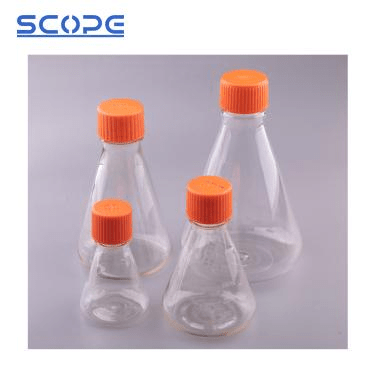
Mixing Solutions
The wide base and tapering sides provide ample surface area for efficient mixing. This allows for efficient agitation and thorough interaction of various liquids or solids and liquids. The narrow opening reduces the risk of liquid splashing out while swirling or stirring, promoting safety and keeping the workspace clean. For reactions involving volatile liquids, the narrow neck slows evaporation, reducing reagent loss and ensuring desired concentrations.
Titrations
Chemical titrations commonly use Erlenmeyer flasks as titration vessels. Their conical shape facilitates precise volume measurement, while their narrow neck allows for precise titrant addition. The slanted sides of the Erlenmeyer flask make swirling the liquid contents extremely simple. The narrow neck has two purposes. For starters, it helps to prevent splashes and spills while swirling, particularly when the flask is nearly full. Second, it concentrates the vapors above the solution, making it easier to detect any color changes that may indicate the end of the titration.
Culturing Microorganisms
It is common practice to grow microorganisms such as yeast or bacteria in Erlenmeyer flasks. The Erlenmeyer flask’s broad base and narrow neck provide more surface area for gas exchange. This is critical for aerobic microorganisms, which need oxygen to grow. The narrow neck also helps to reduce contamination by keeping airborne particles from entering the culture. Erlenmeyer flasks come in a variety of sizes, allowing researchers to tailor the culture volume to their needs. Erlenmeyer flasks are typically made of borosilicate glass and are transparent. This enables researchers to observe the growth and behavior of microorganisms in the culture without disturbing them. Furthermore, the glass is chemically resistant and can withstand sterilization procedures, which ensures the purity of the culture.
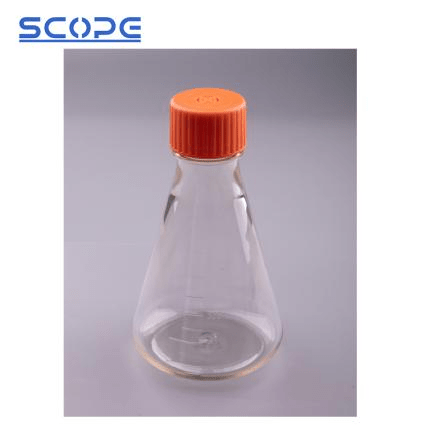
What Are the Tips for Using Erlenmeyer Flasks?
Tip 1: Inspect the Flask Before Use
Before beginning any experiment, thoroughly inspect the flask for cracks, chips, and imperfections. Even minor nicks can weaken the flask’s strength and integrity, particularly when heated or shaken, potentially leading to breakage and hazardous spills.
Examine for traces of residue or contaminants from previous experiments. Improper cleaning can compromise the purity of your cultures or reactions, resulting in incorrect results or even contamination risks.
Ensure that the flask volume is appropriate for your experiment. Using a flask that is too large can result in inefficient mixing and gas exchange, whereas a flask that is too small may limit growth or overflow during reactions.
Consider the chemicals you’ll be using and select an appropriate flask material. Erlenmeyer flasks are typically made of borosilicate glass, but some experiments may require specialized materials such as PTFE or polypropylene to be compatible with specific solvents or reactions.
Tip 2: Clean the Flask Before and After Use
Erlenmeyer flasks should be thoroughly cleaned before and after each use. To remove any remaining residue from the flask, wash it with soapy water and brush it. Another option is to rinse the flask with distilled water. Contaminated flasks can introduce unwanted microorganisms, chemicals, or other impurities into your experiment. This can result in inaccurate results, skewed data, and even compromised research. Clean flasks ensure that your chemical reactions or solutions proceed as planned, free of interference from leftover substances from previous experiments. This is critical for ensuring the validity of your findings.
Thorough cleaning, particularly after working with potentially pathogenic microorganisms, is critical for preventing germ spread and ensuring the safety of researchers and lab personnel.
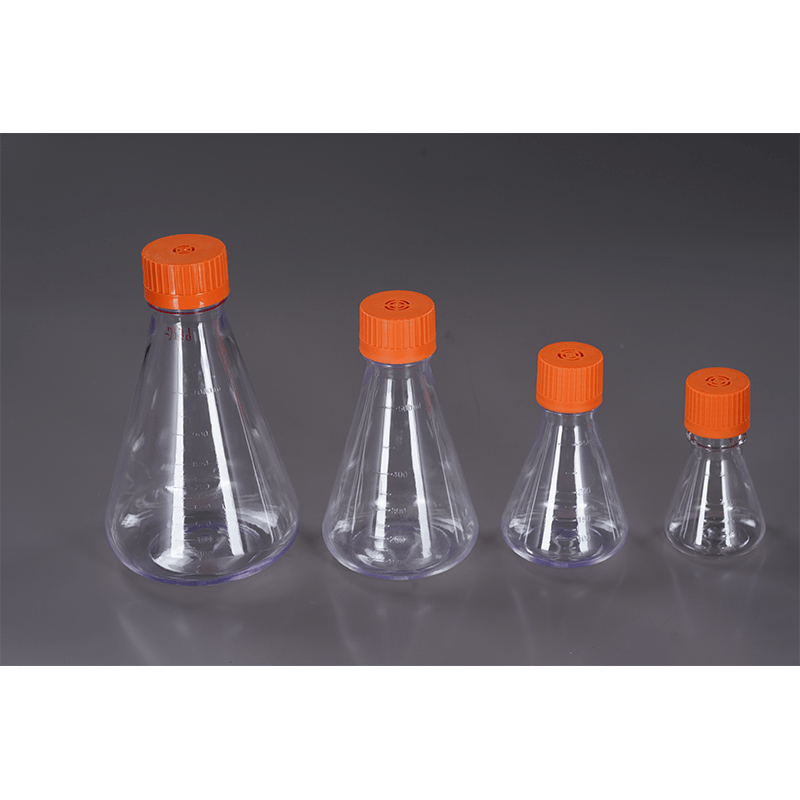
Tip 3: Use a Stopper Or Cork to Prevent Spills
Use a stopper or cork to prevent spills while mixing or heating a solution in an Erlenmeyer flask. Using a cork or stopper can also help prevent evaporation. Erlenmeyer flasks have a wider mouth than beakers or flasks with narrower openings. This makes them more prone to spills, particularly when shaken or tilted. A stopper or cork effectively seals the opening, preventing valuable liquids from escaping and causing accidents or contaminating the surrounding workspace.
In microbiology and cell biology experiments, contamination can destroy entire cultures and jeopardize results. Using a sterile stopper or cork after autoclaving the flask helps to keep the system closed, reducing the possibility of airborne microorganisms or dust entering and contaminating the culture.
Tip 4: Use a Heating Mantle When Heating Solutions
To heat a solution in an Erlenmeyer flask, use a heating mantle. The flask will not overheat because the heating mantle distributes heat evenly. Heating mantles, unlike Bunsen burners or hot plates, do not have any exposed flames or direct heat sources. This significantly reduces the risk of flammable solvents igniting or the flask cracking due to localized overheating.
Heating mantles provide precise temperature control, preventing solutions from boiling over or reaching dangerously high temperatures, which could degrade chemicals or damage the flask. The mantle’s insulating material helps to contain spills within its boundaries, reducing the spread of potentially hazardous chemicals.
Tip 5: Label the Flask With the Contents
Make sure to label the Erlenmeyer flask in which you are storing the solution with the contents information. This will ensure that you use the correct solution and help to avoid accidents. Working with multiple flasks containing various chemicals or biological samples is very common in laboratories. Without proper labeling, it is easy to accidentally mix up solutions, resulting in inaccurate results, wasted experiments, or even safety risks.
Contamination is another major concern, particularly when dealing with cultures or sensitive experiments. A mislabeled flask may contaminate other cultures or introduce unwanted elements into your experiment, undermining its validity. A well-labeled flask is easily identifiable, saving you valuable time searching for specific samples or solutions on a cluttered benchtop. This improved organization promotes a safer and more efficient lab workflow.
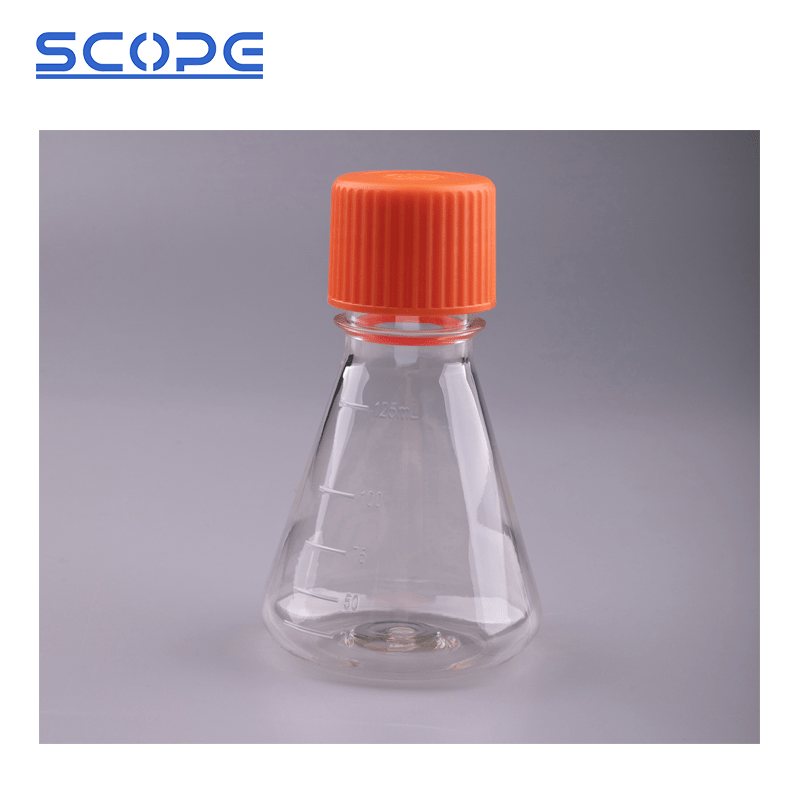
Tip 6: Dispose of the Flask Properly
Make sure to properly dispose of an Erlenmeyer flask after each use. If the flask contains hazardous materials, dispose of it according to local laws. Erlenmeyer flasks may have been used with hazardous chemicals or biological materials. Improper disposal may expose people or the environment to harmful substances. Proper disposal, which involves following waste disposal protocols for specific lab materials, ensures safe handling and reduces contamination risks.
Damaged or cracked flasks present a significant cutting hazard. Disposing of them properly in designated glass waste streams prevents accidents and ensures a safe cleanup.
Conclusion
Erlenmeyer flasks are indispensable tools in scientific laboratories due to their versatility, durability, and adaptability to diverse experimental needs. They are extensively employed in many scientific fields, such as environmental science, biology, chemistry, and microbiology. For a variety of laboratory tasks, they are indispensable due to their distinctive conical shape and narrow neck, which enhance efficiency and safety. As one of the top providers of lab consumable supplies, Scopelab offers a wide range of high-quality products not only the laboratory Erlenmeyer flasks with screw caps. Our products satisfy the specific requirements of laboratories in a range of disciplines and adhere to strict industry standards. For more information, please contact us.
